Chemicals known, presumed, or suspected to have adverse effects on the sexual function and fertility of adults or the development of offspring are considered reproductive toxicants. The GHS, CLP, and similar regulatory bodies have specific concentration limits and classification criteria that industrial facilities must follow when exposing shop floor workers to chemicals and mixtures labelled as such.
Reading through the entire GHS Purple Book for the exact guidelines can be a daunting task. That's why ERA experts have compiled the essential information into a concise, 22-page guide that is both thorough and easy to read. If you work with Safety Data Sheets (SDS) for health and safety purposes, this resource will save you time and ensure that you have the right chemical information displayed accurately.

By reading this guide, you will learn the following:
- The precise definition of reproductive toxicity
- How to determine the reproductive toxicity potential of a chemical using classification studies and the weight of evidence approach
- Classification for mixtures with and without data
- Appropriate labeling for reproductive toxicants, including hazard codes








